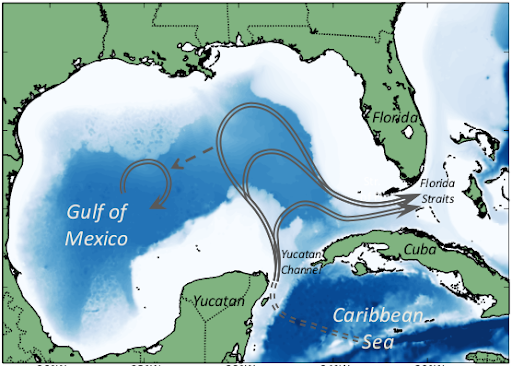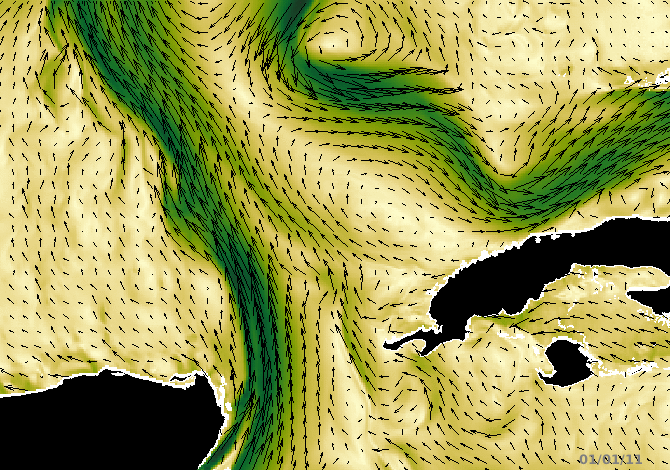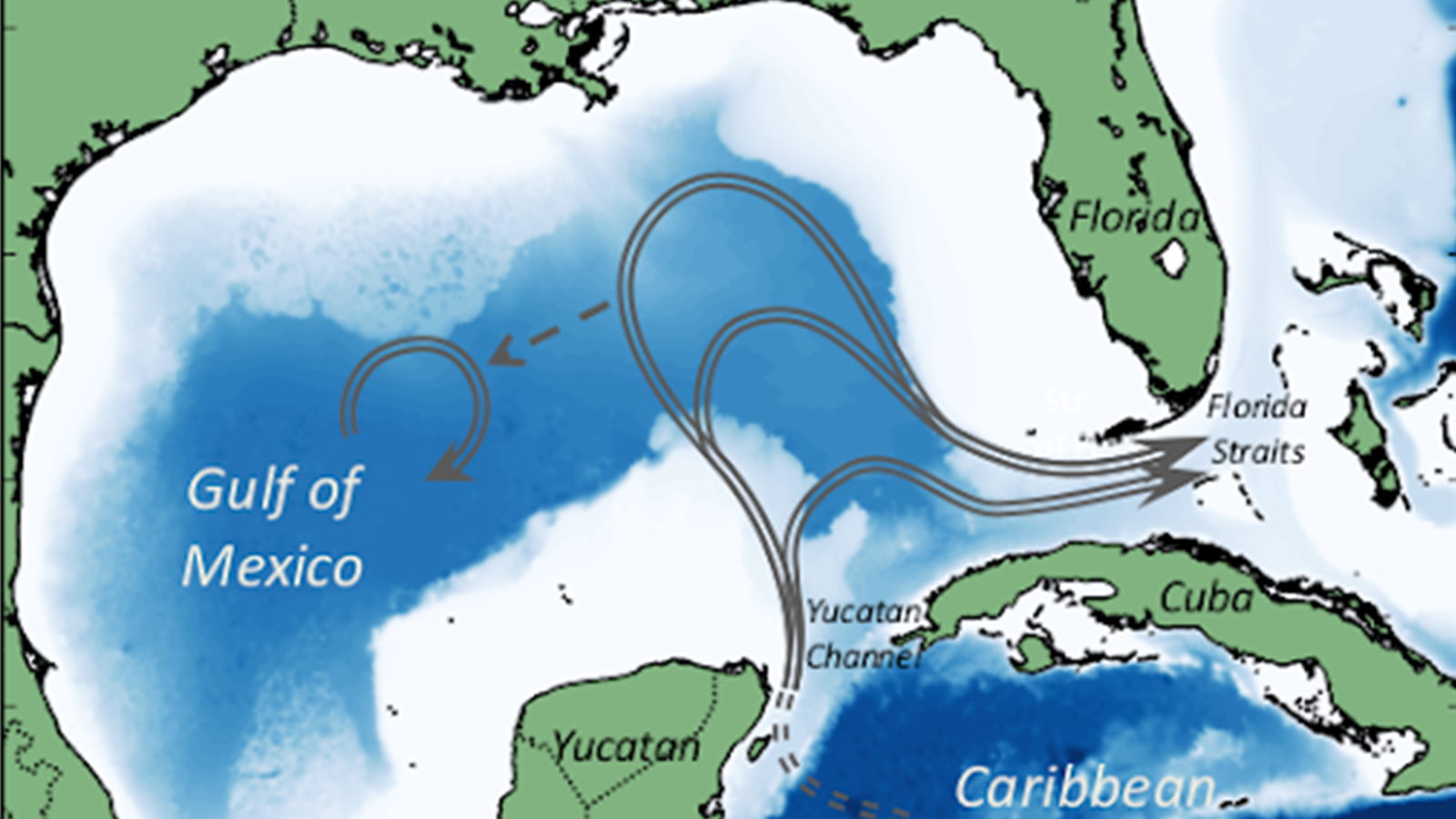A recent study by scientists at NOAA’s Atlantic Oceanographic and Meteorological Laboratory (AOML) in collaboration with partners at the University of Miami’s Rosenstiel School of Marine, Atmospheric, and Earth Science used a numerical modeling approach to investigate the impact of the eddy field in the Caribbean Sea on Loop Current predictions downstream in the Gulf of America. They found that eddy activity in the Caribbean Sea is crucial for the accurate prediction of eddy shedding by the Loop Current.
The Gulf of America is a semi-enclosed basin connected to the Caribbean Sea and to the North Atlantic Ocean. Its main dynamical feature is the Loop Current, which is a portion of the North Atlantic western boundary current that carries ocean waters from the Tropics towards higher latitudes. It enters the Gulf of America in the south, through the Yucatan Channel between the Yucatan Peninsula in Mexico and the western tip of Cuba, and exits to the east, through the Straits of Florida between Florida and the northern coast of Cuba. Eventually, it becomes the Gulf Stream.

The shape of the Loop Current changes with time, growing northward from a position in which it flows directly from the Yucatan Channel (between Mexico and Cuba) to the Florida Straits (between Florida and Cuba) until it forms a large loop that extends into the northern Gulf of America, near the Mississippi Delta.
An eddy is an independent circular current of water that breaks off from an ocean current. When extended, the Loop Current closes its clockwise circulation to shed a large, anticyclonic, warm-core eddy called a Loop Current Eddy, which then drifts westward inside the Gulf. The shedding of a Loop Current Eddy leads to the sudden southward shift of the Loop Current to its retracted position.

Characterizing and predicting the state of the Loop Current has important implications, as it affects all ranges of ocean-related processes in the Gulf of America, from larval connectivity to pollution transport to oil platform operations. The Gulf of America is a large area for oil exploration. In the case of an accidental oil spill, better predictions of the Loop Current system will help scientists better understand where the oil will travel.
Compared to the Gulf of America interior and Yucatan Channel that have been extensively investigated, and although directly upstream of the Loop Current, the Caribbean Sea has received little attention when examining the Loop Current Eddy shedding process. In this study, scientists quantified to what extent eddy activity in the Caribbean Sea influences the Loop Current shedding process in the Gulf of America and its prediction.
To do so, they conducted numerical experiments that consisted of two series of ocean forecasts, one with realistic initial conditions and one in which eddy activity in the Caribbean Sea was diminished. These experiments took place in 2015, a year when the Loop Current was very active with several Loop Current Eddy detachments, re-attachments, and separations.
In terms of sea surface height, the forecasts using realistic initial conditions had, on average, lower errors in the southeastern part of the Gulf of America north of the Yucatan Channel than the forecasts initialized with diminished eddy activity in the Caribbean Sea. The forecast experiments also showed that, when eddy activity in the Caribbean Sea was diminished in the initial conditions, the model sometimes failed to predict a Loop Current Eddy detachment, and the errors in the predicted date of a Loop Current Eddy detachment tended to be larger.
The results of this study show that the eddy field in the Caribbean Sea is essential for correctly predicting Loop Current Eddy shedding events and their timing, and thus cannot be ignored. To realistically predict the Loop Current’s evolution, oceanographers must use data-assimilative models that cover both the Gulf of America and Caribbean Sea, or pay particular attention to accurate boundary conditions for limited-area Gulf of America models.
“Our study stresses how ocean processes from one basin influences ocean processes in a neighboring basin. You cannot accurately predict what will happen in the Gulf of America if you ignore the processes taking place in the Caribbean Sea,” said Matthieu Le Hénaff, an AOML/ CIMAS scientist and lead author of the study.
This finding is important for near-real time and operational prediction systems, especially systems that focus on forecasting the Gulf of America and Loop Current evolution. Loop Current prediction is important for hurricane forecasting, larval transport, and the oil industry. Because the Loop Current is so intense, it can disrupt oil operations. Its correct prediction at a range of a few weeks helps the oil industry plan accordingly to avoid disasters.
Citation:
Le Hénaff, M., V.H. Kourafalou, Y. Androulidakis, N. Ntaganou, and H.-S. Kang, 2023: Influence of the Caribbean Sea eddy field on Loop Current predictions. Frontiers in Marine Science, 10:1129402.
